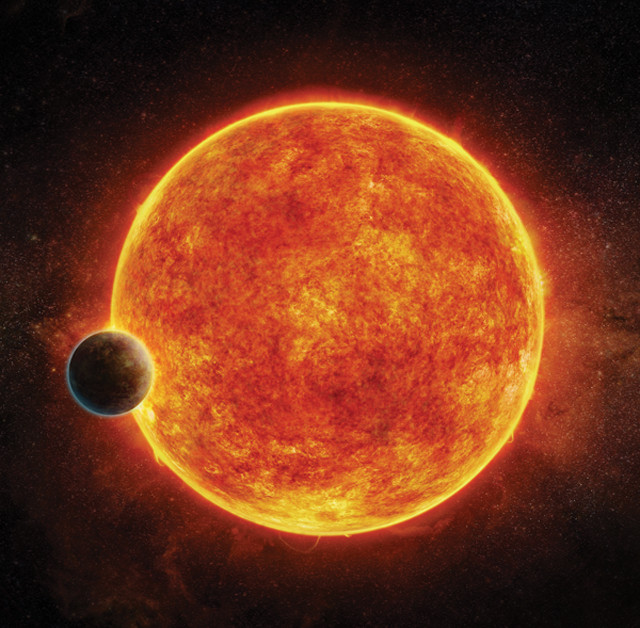
by Mary Caperton Morton Monday, July 17, 2017

This planet is located in the liquid water habitable zone surrounding its host star, a small, faint red star named LHS 1140. The planet weighs about 6.6 times the mass of Earth and is shown passing in front of LHS 1140. Depicted in blue is the atmosphere the planet may have retained. Credit: M. Weiss/CfA.
A recently discovered exoplanet 40 light-years from Earth appears to orbit its home star at a distance suggesting it could support liquid water. The planet, dubbed LHS 1140b and reported in a study in Nature, is located in the constellation Cetus and orbits a red dwarf star. The rocky planet is 10 times closer to its star than Earth is to the sun, but the red dwarf only puts out a fraction of the light that the sun does, meaning LHS 1140b lies in the middle of the habitable zone around the star.
“This is the most exciting exoplanet I’ve seen in the past decade,” said lead author Jason Dittmann of the Harvard-Smithsonian Center for Astrophysics in Cambridge, Mass., in a statement. “We could hardly hope for a better target to perform one of the biggest quests in science — searching for evidence of life beyond Earth.”
Spotted by the MEarth exoplanet-detecting project, based in Cambridge, and then characterized using the European Southern Observatory’s High Accuracy Radial Velocity Planet Searcher, LHS 1140b is slightly larger than Earth, but has roughly seven times more mass.
The planet is estimated to have formed roughly 5 billion years ago and may still retain its atmosphere, the team reported, although they noted that young red dwarf stars are known for producing large amounts of radiation that can strip away the atmospheres of orbiting planets. Nonetheless, the planet’s rocky nature, size, age and rotation rate make it a particularly promising candidate among the exoplanets that could support life, researchers said.
© 2008-2021. All rights reserved. Any copying, redistribution or retransmission of any of the contents of this service without the expressed written permission of the American Geosciences Institute is expressly prohibited. Click here for all copyright requests.